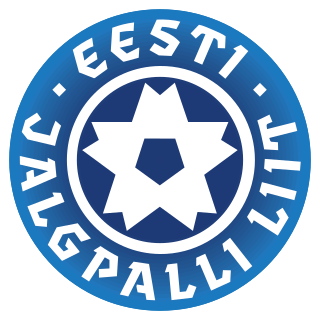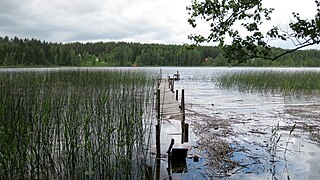The Republic of Estonia gained its independence from the Russian Empire on 24 February 1918 and established diplomatic relations with many countries via membership of the League of Nations. The forcible incorporation of Estonia into the Soviet Union in 1940 was not generally recognised by the international community and the Estonian diplomatic service continued to operate in some countries. Following the restoration of independence from the Soviet Union, Russia was one of the first nations to re-recognize Estonia's independence. Estonia's immediate priority after regaining its independence was the withdrawal of Russian forces from Estonian territory. In August 1994, this was completed. However, relations with Moscow have remained strained primarily because Russia decided not to ratify the border treaty it had signed with Estonia in 1999.

Tallinn is the capital and most populous city of Estonia. Located in the northern part of the country, on the shore of the Gulf of Finland of the Baltic Sea, it has a population of 434,562. Administratively a part of Harju maakond (county), Tallinn is a major financial, industrial, cultural, educational and research centre of Estonia. Tallinn is located 80 kilometres (50 mi) south of Helsinki, Finland, 320 kilometres (200 mi) west of Saint Petersburg, Russia, and 380 kilometres (240 mi) east of Stockholm, Sweden. It has close historical ties with these three cities. From the 13th century until the first half of the 20th century Tallinn was known in most of the world by its historical German name Reval.

Tartu is the second largest city of Estonia, after Estonia's political and financial capital Tallinn.
The history of Estonia forms a part of the history of Europe. Humans settled in the region of Estonia near the end of the last glacial era, beginning from around 8500 BC. Before German crusaders invaded in the early 13th century, proto-Estonians of ancient Estonia worshipped spirits of nature. Starting with the Northern Crusades in the Middle Ages, Estonia became a battleground for centuries where Denmark, Germany, Russia, Sweden and Poland fought their many wars over controlling the important geographical position of the country as a gateway between East and West.

The Baltic states, also known as the Baltic countries, Baltic republics, Baltic nations or simply the Baltics, is a geopolitical term, typically used for grouping the three sovereign states in Northern Europe on the eastern coast of the Baltic Sea: Estonia, Latvia, and Lithuania. The term is not used in the context of cultural areas, national identity, or language. The three countries do not form an official union, but engage in intergovernmental and parliamentary cooperation. The most important areas of cooperation between the three countries are foreign and security policy, defence, energy & transportation.
Counties are the first-level administrative subdivisions of Estonia. Estonian territory is composed of 15 counties, including 13 on the mainland and 2 on islands. The government of each county is led by a maavanem (governor) who represents the national government at the regional level. Governors are appointed by the national government for a term of five years.

The terms Baltic region, Baltic Rim countries, and the Baltic Sea countries refer to slightly different combinations of countries in the general area surrounding the Baltic Sea in Northern Europe.

Estonians are a Finnic ethnic group native to Estonia who speak the Estonian language.

MS Estonia, previously Viking Sally (1980–1990), Silja Star (1990–1991), and Wasa King (1991–1993), was a cruise ferry built in 1979/80 at the German shipyard Meyer Werft in Papenburg. The ship sank in 1994 in the Baltic Sea in one of the worst maritime disasters of the 20th century. It is the second-deadliest peacetime sinking of a European ship and the deadliest peacetime shipwreck to have occurred in European waters, with 852 lives lost.

The Estonian War of Independence, also known as the Estonian Liberation War, was a defensive campaign of the Estonian Army and its allies, most notably the White Russian Northwestern Army, Latvia, and the United Kingdom, against the Soviet Western Front offensive and the aggression of the Baltische Landeswehr. It was fought in connection with the Russian Civil War during 1918–1920. The campaign was the struggle of Estonia for its sovereignty in the aftermath of World War I. It resulted in a victory for the newly established state and was concluded in the Treaty of Tartu.

The Estonia national football team represents Estonia in international football and is controlled by the Estonian Football Association, the governing body for football in Estonia. Estonia play their home matches at the A. Le Coq Arena in Tallinn, Estonia.

The Estonian Football Association is the governing body of football, beach soccer and futsal in Estonia, established on 14 December 1921. It organizes the football league, including the championship which is called Meistriliiga, Estonian Cup and the Estonian national football team. It is based in Tallinn. EJL became a member of FIFA in 1923, but following Estonia's annexation by the Soviet Union it was disbanded. It became a member again in 1992 after Estonia reinstated its independence.

Estonia has participated in the Eurovision Song Contest 25 times since making its debut in 1994. Its first appearance would have taken place in 1993, however a qualification round was installed for seven former Eastern bloc countries hoping to make their debut in the contest, with Estonia failing to qualify. Estonia has won the contest once, in 2001.
The Estonian resistance movement was an underground movement to resist the occupation of Estonia by Nazi Germany, 1941–1944 during World War II. Due to the unusually benign measures implemented in Estonia by the German occupation authorities, especially in contrast to the preceding harsh Soviet occupation of Estonia (1940–1941), the movement was slower to develop effective tactics on a wide scale than in other occupied countries.

The Estonian Defence Forces is the unified armed forces of the Republic of Estonia. The Estonian military is a defence force consisting of Land Forces, Navy, Air Force, and a paramilitary organization Defence League. The national defence policy aims to guarantee the preservation of the independence and sovereignty of the state, the integrity of its land area, territorial waters and airspace and its constitutional order. Its main goals remain the development and maintenance of a credible capability to defend the nation's vital interests and development of the defence forces in a way that ensures their interoperability with the armed forces of NATO and European Union member states to participate in the full range of missions for these military alliances.

The Estonian Soviet Socialist Republic, also known as Soviet Estonia or Estonia was an unrecognized republic of the Soviet Union, administered by a subordinate of the Soviet government. The ESSR was initially established on the territory of the Republic of Estonia on 21 July 1940, following the invasion of Soviet troops on 17 June 1940, and the installation of a puppet government backed by the Soviet Union, which declared Estonia a Soviet constituency. The Estonian SSR was subsequently incorporated into the Soviet state on 9 August 1940. The territory was occupied by Nazi Germany from 1941 to 1944 and administered as a part of Reichskommissariat Ostland.














